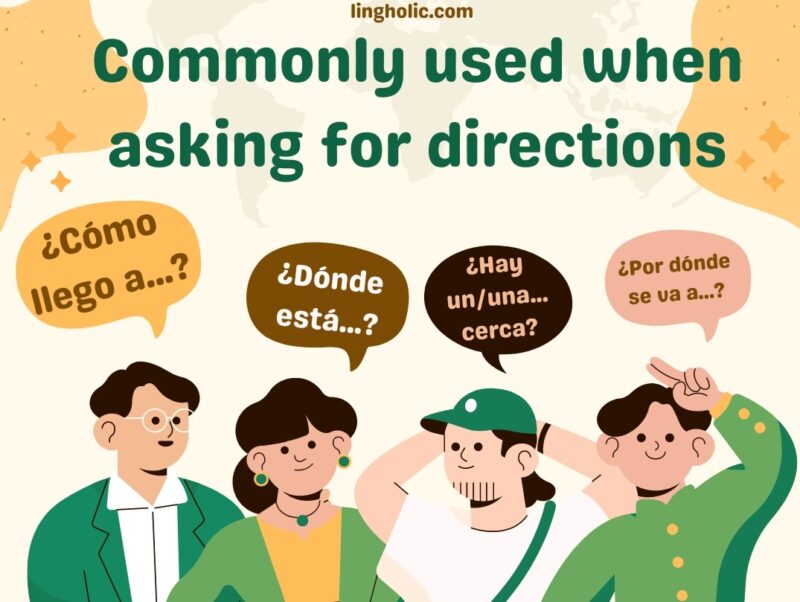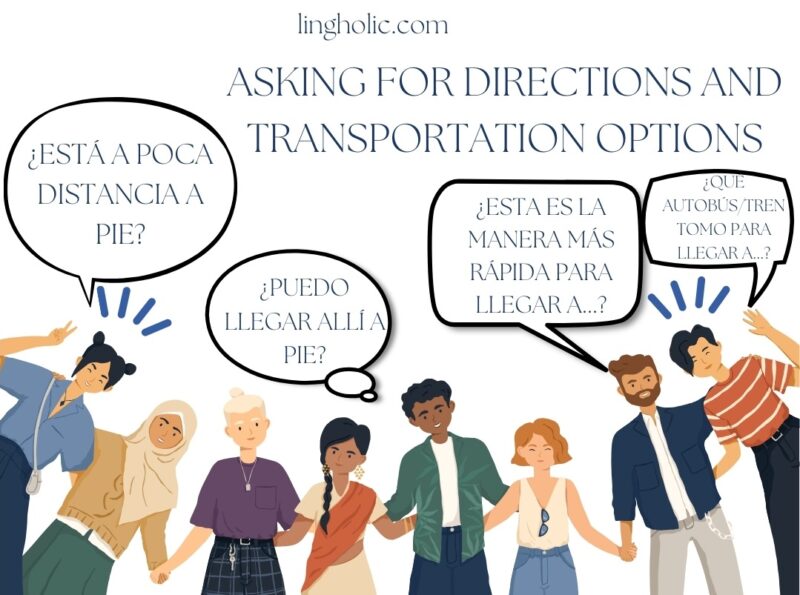Did you know that there are 20 Spanish-speaking countries out there? All of them are quite popular places as well.
So, if you want to spend your next vacation in the Dominican Republic or Puerto Rico, it would be great if you learn how to communicate with people there. You know, not all of them will be good at English. And that can be quite annoying. Spending time in another country while trying to find a certain spot, or order food, but there is this barrier where you simply cannot get what you are looking for. Don’t blame that person for not speaking your language. Think about learning a new one.
But it takes time. Learning a new language will require effort and determination. However, some basics can help you a lot. For example, find out more about the street food and spices, and you can enjoy each time. You will never get what you haven’t asked for after ordering “Pastelitos”.
And directions are even more important. I mean, imagine a situation where your battery is drained, no clue where you can catch a taxi, surrounded by “zero” English speakers. The first person willing to help you will have to use sign language since you can’t catch anything they say. It doesn’t have to be that way. Just learn some basic phrases and words that will help you roam around without the fear of getting lost. Now, let’s check those direction terms used in Spanish.
Let’s Start with Essentials
- ¿Dónde está…? – Where is…?
- ¿Cómo llego a…? – How do I get to…?
- ¿Hay un/una… cerca? – Is there a… nearby?
- ¿Puede mostrarme en el mapa? – Can you show me on the map?
- ¿Por dónde se va a…? – How do you go to…?

Responses You Might Receive
- Siga recto. – Go straight.
- Gire a la izquierda/derecha. – Turn left/right.
- Está a la vuelta de la esquina. – It’s around the corner.
- Está cerca/lejos. – It’s close/far.
- Cruce la calle. – Cross the street.
Other Useful Phrases
- ¿Cuánto tiempo se tarda en llegar a…? – How long does it take to get to…?
- ¿Es mejor ir a pie o en autobús? – Is it better to go on foot or by bus?
- Perdón, no entiendo. – Sorry, I don’t understand.
- ¿Puede hablar más despacio? – Can you speak slower?
After learning all these terms, and being able to use them in a regular conversation, you shouldn’t stop there. Why wouldn’t you reach for higher fluency?
- ¿Esta es la manera más rápida para llegar a…? – Is this the quickest way to get to…?
- ¿Qué autobús/tren tomo para llegar a…? – Which bus/train do I take to get to…?
- ¿Está a poca distancia a pie? – Is it a short walk?
- ¿Cuál es el mejor camino para ir a…? – What is the best way to go to…?
- ¿Puedo llegar allí a pie? – Can I get there by walking?

And I already mention the case of getting lost. In that case, you can use these phrases.
- Me he perdido; ¿puede ayudarme? – I’m lost; can you help me?
- Busco este lugar, ¿lo conoce? – I’m looking for this place, do you know it?
- No encuentro el camino a… – I can’t find the way to…
Or if you are not sure about something. You know, native speakers are known for speaking quite fast, and it can be difficult to catch up, so use these.
- ¿Podría repetirlo más lentamente, por favor? – Could you repeat that more slowly, please?
- No estoy seguro de haber entendido bien. – I’m not sure I understood correctly.
- ¿Podría escribirlo, por favor? – Could you write it down, please?
They may also indicate a certain spot, and direct you according to it.
- Al final de la calle. – At the end of the street.
- Justo aquí a la derecha/izquierda. – Just here on the right/left.
- Al lado del banco/supermercado. – Next to the bank/supermarket.
- Enfrente del parque. – In front of the park.
- A través de la plaza. – Across the square.

Moreover, you can always check twice just to make sure to got it right.
- Entonces, lo que tengo que hacer es… – So, what I need to do is…
- ¿Así que giro en la primera/segunda calle? – So, I turn on the first/second street?
- ¿Sigo derecho hasta ver…? – I keep going straight until I see…?
And in the end, don’t forget to be polite. Don’t be one of “those” tourists!
- Muchísimas gracias por su ayuda. – Thank you very much for your help.
- Le agradezco mucho. – I appreciate it a lot.
- Ha sido muy amable. – You’ve been very kind.
Final Thoughts
And there you have it. Learning these will surely help you have at least some chat if you have never spoken Spanish before. It can also serve as a motivation for you to invest more time into learning it to perfection.
All in all, you should even consider writing some of these down. Don’t rely only on your phone since you can lose it, or get the battery drained. For me, this will surely be one of the steps when I start preparing for my next vacation.
I am Edward Quin, a teacher and part-time freelance writer specializing in Spanish and English. With a major in these languages, I have a deep grasp of their structures, cultural richness, and literary traditions. My passion for languages inspired me to become a high school teacher, where I motivate students to discover new cultures and languages.
Related Posts:
- How to Ask for Directions in German?
- Introduction to Beginners Spanish - Learn, Speak, Thrive!
- 80 Everyday Spanish Conversational Phrases You Must Learn
- 50 Basic Spanish Words to Learn for Beginners: Start Today!
- Top 5 Books for Learning Spanish Language 2024: Do…
- How to Pronounce Days, Months, and Seasons in Spanish?

